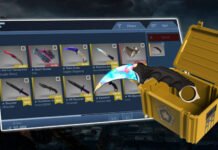Crypto space is filled with the exploits of DeFi, and NFTs, but another major thing that is pulling crowds is the vibrant world of creative web3 gaming. The crypto games are evolving more than before and there are umpteen options from play-and-earn titles to fractionalized game ownership.
Near protocol is a mine of games and out of them, OP Games steal the limelight, while Arcadia is perfectly suited for those who are looking for a community-owned arcade game, which has plug-and-play developer SDK, and monetization features.
Below we will have some insights into how Near protocol is disrupting the gaming industry and how gaming companies can make the most out of web3 by going for Near protocol development to onboard into this arena.
A look inside the gaming industry
The gaming industry is witnessing a tectonic shift and this has been possible due to cryptocurrency and Web3 technologies, as traditional top-down, centralized Web2 models of gaming are being brutally challenged. Unlike earlier monotonous games, now a brand-new genre of games has emerged like community operated, and new economic structures like play-to-earn are launched.
There are many developers who feel they are restricted in web2, as they don’t have much funding to hit number one in the App or Google Play stores, but crypto and Web3 can change that. The experts are hopeful that these technologies will eliminate the gatekeepers and change the way both developers and players participate in gaming to finally alter the dynamics of the gaming industry.
Decentralization is the key part of web3, which is set to disrupt the gaming industry, but there’s much more than that. The community management and co-creation of games can be done via decentralized autonomous organizations (DAOs), and everyday emerging radical new economic and financial models within games are just proving that. Even global brands have realised the need to become involved with crypto gaming in some or the other way.
Role of Web3.0 in the rise of fandom e-sports
One of the major industry trends in recent years is the rise of e-Sports and competitive gaming. These games are perfectly suited to accelerate the process of taking gaming towards decentralization, cryptocurrencies, and Web3 technologies. While concepts like digital collectibles and NFTs represent a significant opportunity to bring fans, creators, and brands closer to eSports teams and competitors.
According to experts at Rejolut right now digital collectibles can be a medium for fan engagements and it can also serve as a broad spectrum of use cases. These can include a utility NFT that grants fans a privileged ticket to a tournament or access to their favorite player through special Twitch emotes for Discord channels. The vision is to make web3 a user-friendly place for gamers, fans, and collectors, while offering economic incentives for all parties involved.
CEO of Arterra Labs reports that the Near protocol is their first choice due to benefits it provides in terms of scalability and user experience. To make interaction more pleasant, they have subsidized the gas costs and became custodian of the users’ private keys, so that users need not to worry about anything. According to reports it is said that web3 is moving towards Composable Fandom, as web3 facilitates more interactive, long-lasting, and flexible ways for fans to interact.
The concept of ownership in the game is almost negligible and this can be changed. As NFTs and Web3 brings more opportunities for players to make a living and fans can own their assets, and their fandom.
Building a futuristic gaming arena using Near protocol
The forthcoming Javascript SDK of Near protocol can be seen as a game changer for the gaming industry, as it will make NEAR ecosystem platforms great creative centers for Web2 and Web3 developers. No doubt Rust and Solidity are great programming languages for web 3 development, but an issue is a vast number of developers design games using Unity (C++), Javascript, Swift, and others.
The announcement of NEAR’s Javascript SDK will only attract more web3 game developers and that will serve as one part of capitalizing on Web3’s democratizing power. Going forward, if game development firms want to make development work easier then it’s recommended to use Rust to make optimum full use of Near protocol.
also checkout : Defi And Curve: An Invincible Duo Worth Your Time, Effort, And Definitely Your Asset



































































